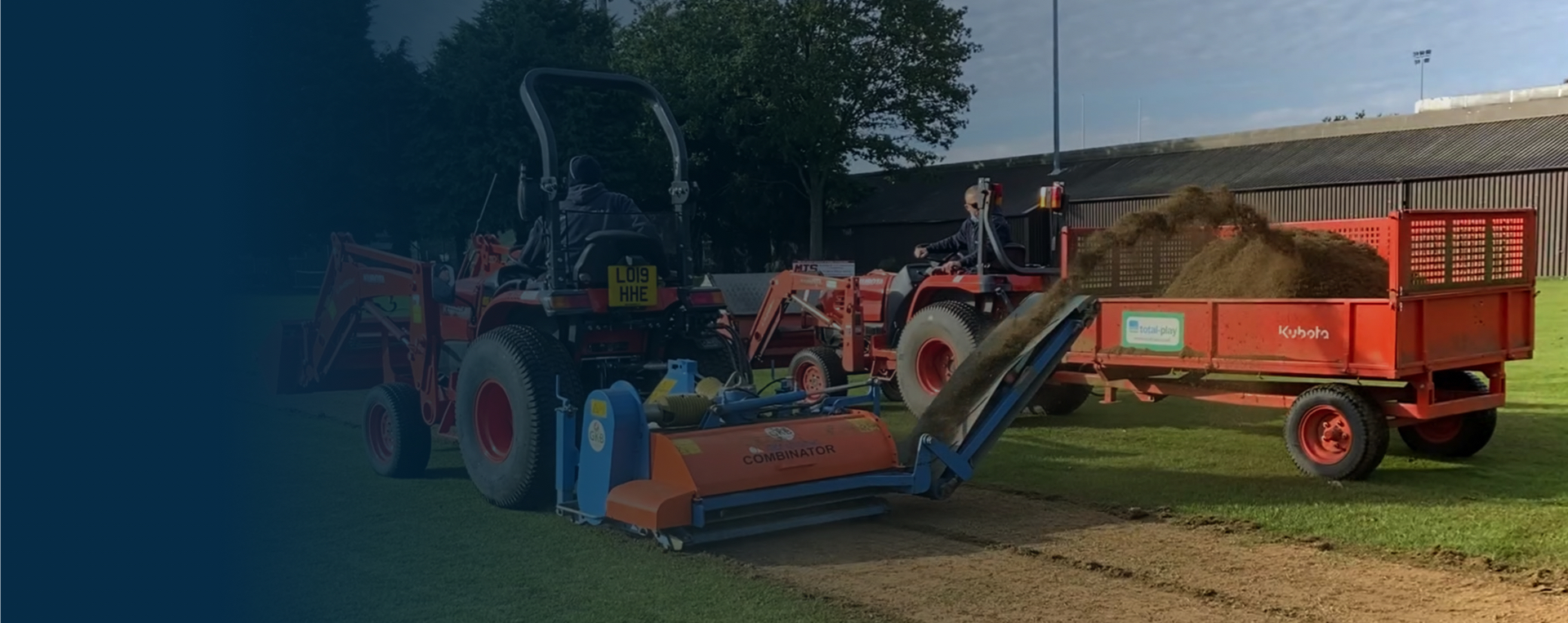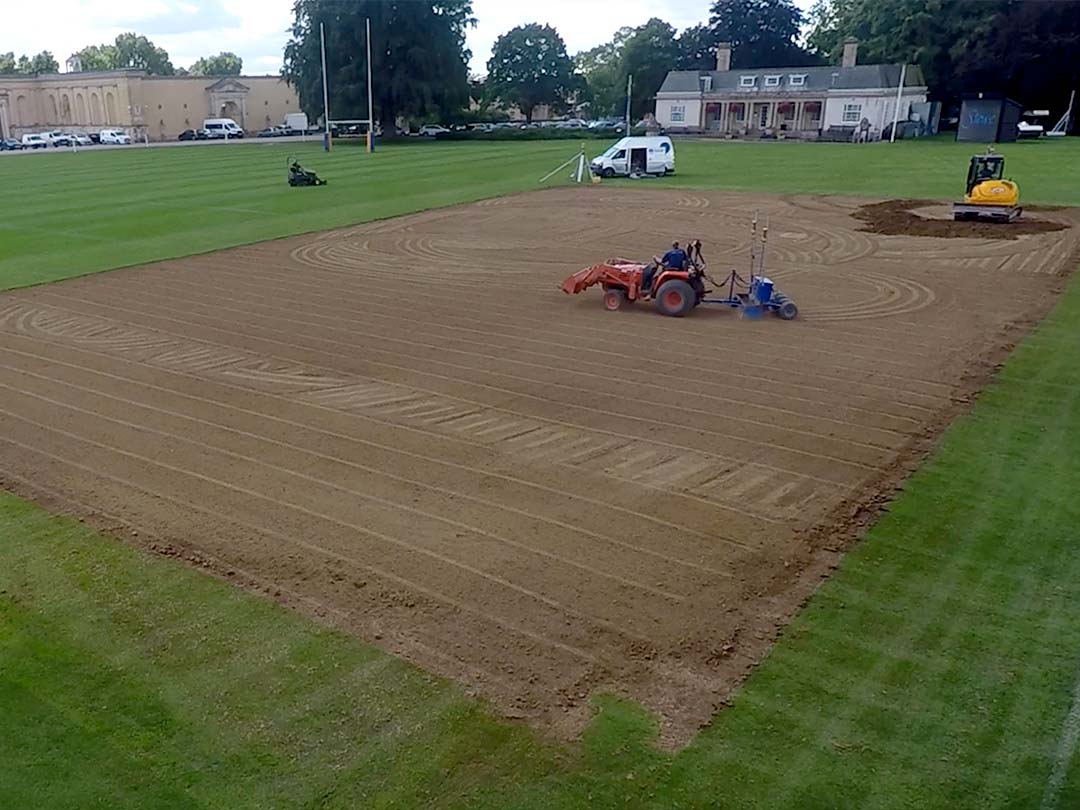Square Maintenance
Natural Works | Square Maintenance | End of Season Care

As a former first-class groundsman, Chairman of the First Class Groundsman Committee, trainer, and pitch advisor for the IoG, total-play’s MD David Bates knows a thing or two about natural cricket pitch preparation and maintenance. Here, he shares his approach to cricket pitch regeneration…
“Over the years, I’ve worked on literally hundreds of natural turf cricket pitches, ranging from village grounds to first-class and International venues. When surveying these pitches, assessing their fitness for purpose and making recommendations for works to remedy key issues, I’ve always mulled over how to best explain, in simple terms, the options for cricket pitch works to the club man and groundsman.
A couple of years ago, I sat down and did exactly that; creating a document that defines works into four key categories – or processes. The processes range from regular end-of-season works for natural turf cricket tables to the construction of a new cricket table to remedy even the most severe of problem pitches.” David Bates – Total Play LTD.
In this section will look at two of the four options: End-of-Season Renovation and Square Restoration.
‘End of Season renovations’ or ‘Annual Maintenance’ works are completed following the end of the playing season. They provide the foundation for the next season’s playing surface and are vital.
The main aim of these works is to repair damage caused during the playing season, such as improving surface levels and grass coverage. The works are also carried out at the optimum time of year to control organic matter content on the surface.
The sequence of works starts with the grass sward being cut as short as possible prior to scarification.
For scarification, a tractor-mounted scarifier or linear aerator should be used in dry conditions; this gives the best possible result. The scarifier should have contra-rotating vertical blades that are approximately 3mm wide. Vertical blades cut into the surface to remove organic matter, relieve soil tension, remove high areas and create grooves. The machine should be set to the depth of the organic layer and aim to hit 30-40 % of the surface. The debris must then be completely removed using blowers or powered brushes.
The grooves created by the scarifier are then used to combine the seed and top dressing into the surface, giving a seed-to-soil connection. Seed should be applied evenly using a cyclone spreader or dimple seeder.
Following seeding, the selected loam should be applied. This process can be undertaken using various pieces of equipment, including the belt or brush-driven top dressers, by hand casting or with a straight edge. The aim is to cover the seed and brings up surface levels without smothering the existing grass plant and creating layers. The amount of loam used should be between 6 to 12, 25kg bags per pitch; surface levels and the depth of scarification grooves determine this.
Once the loam has been laid, the fertiliser can be applied. The type and composition of fertiliser should be selected following a soil test and applied at 35 grams per m2 using a cyclone spreader.
End-of-season works are vital to producing good pitches and should be planned and completed as soon as possible after the playing season. This maximises the growing season prior to the commencing play the following season.


The ‘square restoration’ process is used to correct the most commonly seen faults of an established square. The process results in an immediate improvement in performance and will enable the square to be used the following season.
The most common issues are a thatch layer, uneven surface levels and poor grass coverage. In addition to restoring the playing surface, the restoration process can also be used to incorporate a new loam.
Restoration works would include fraise mowing to remove the organic layer (thatch) and the grass sward. This operation requires machinery with a rotating horizontal head that planes off the surface – similar to a turf cutter.
The surface would also be linear aerated using machinery with contra-rotating vertical blades approximately 3mm wide. Vertical blades cut into the surface to relieve soil tension, remove high areas and create grooves. This operation helps fraise mowing by loosening up the ground, while the grooves and material created aid soil amelioration and overseeding.
Severe surface levels (+ 80 mm over 3m), or ‘saddles,’ can also be removed by multiple passes of the linear aerator, surface planer or another type of powered cultivator.
The restoration process should be seen as more aggressive and one step further than typical end-of-season works.









